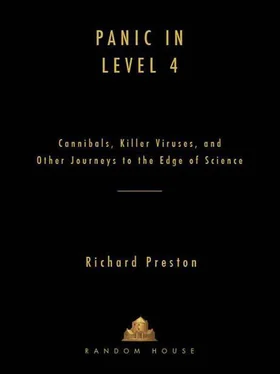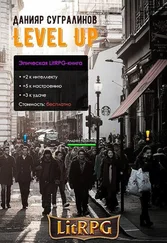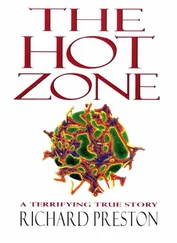In exploring biology, I moved my focus away from the smallest life-forms—viruses—and began climbing the coast redwood trees of California. The coast redwoods are the largest individual living things in nature. Redwoods can be nearly forty stories tall; they would stand out in midtown Manhattan. In order to climb a redwood, you put on a harness and ascend hundreds of feet up a rope into the redwood canopy. It’s like scuba diving, except that you go into the air. The canopy is the aerial part of a forest, and it is an unseen world, invisible from the ground. Once you have ascended into the redwood canopy, which is the world’s tallest canopy, you dangle in midair, in a harness, around thirty stories above the ground. You are suspended from ropes attached to branches overhead. You move through the air while hanging on ropes, sometimes going from tree to tree. The redwood canopy is a lost world, unexplored, out of sight, teeming with unknown life. After writing a book about it ( The Wild Trees ), I learned of the existence of an unexplored rain-forest canopy in eastern North America; I hadn’t known there were rain forests in the East. This eastern rain forest was being destroyed by parasites invading the ecosystem. It was an unseen world that was vanishing even before it had been explored by humans. Thus an interest in giant life-forms ended up returning me to a focus on small things: “A Death in the Forest.”
“The Search for Ebola” is about the search for the unknown host of the Ebola virus, and it narrates an outbreak of Ebola in Congo. In researching it, I ended up talking with a medical doctor named William T. Close. Bill Close, who is the father of the actress Glenn Close, had been the head of the main hospital in Kinshasa, the capital of Congo (then called Zaire). Then, while I was staying late in the offices of The New Yorker on a Friday night—closing time, when the magazine is put to bed—I telephoned Dr. Close for a last-minute fact-checking conversation. In about ten minutes (I had been told) the magazine would be closed—finished—and would be transmitted electronically to the printing plant in Danville, Kentucky. That was when Dr. Close told me the story of a Belgian doctor who had performed a terrifying act that could be called an Ebola kiss, with a patient in an Ebola ward.
“Oh, my God,” I blurted.
I asked someone to go find Tina Brown, the editor, and see if the magazine could be held open for a little while, as a doctor was saying something. It was okay with Brown, but there was no time to take notes. I asked Close to tell me the story again, while I scrawled sentences describing the Ebola kiss on a sheet of paper. With Close waiting on the line, I carried the paper over to the make-up department (an office where the magazine’s compositors worked at computer screens) and I handed it to Pat Keogh, the head of make-up, who typed my scrawl into the master electronic proof. Almost immediately, the passage was reviewed for grammar by The New Yorker ’s grammarian, a quiet person named Ann Goldstein. (Experts who are being quoted in The New Yorker are encouraged not to use bad grammar.)
Minutes later, with Bill Close still waiting on the telephone, we heard that his grammar was okay, and we heard that the magazine had been transmitted electronically to the printing plant. I said good night to the now-eponymous Dr. Close and hung up.
That was when something struck me. How could I have been so stupid? I had forgotten to ask Close what had happened to the Belgian doctor afterward. He would have died a grisly death. Years later, I learned what had transpired, and you will read it here.
In “The Human Kabbalah,” I explored the decoding of the human DNA and the resulting fantastic stock-market bubble that made the genomic scientist J. Craig Venter a billionaire for a while. One day, while working on this story, I was hanging out in the laboratory of the Nobel laureate Hamilton O. Smith—one of the great figures in the history of molecular biology—and I mentioned to him that I was having trouble, as a writer, describing DNA in a physical sense. I wanted readers to get a concrete picture of it in their minds. “The trouble is, DNA is invisible,” I said to Hamilton Smith.
“No, it isn’t,” he said. He asked me if I’d ever seen it. I hadn’t, so he dribbled some purified DNA out of a test tube. It looked like clear snot.
“What does it taste like?” I asked him.
That surprised him a little. He didn’t know. In almost forty years of research with DNA, Hamilton Smith had never tasted the molecule.
As soon as I got home, I ordered some pure, dried DNA through the mail. It arrived: a bit of fluff in a bottle. I put some of it on my tongue. Sure enough, it had a taste. In taking notes, it is useful to remember that all the senses can be involved.
I continued to follow the Chudnovsky brothers and their journeys in the universe of numbers. This led them, with me trailing behind, to the mysterious Unicorn Tapestries, owned by the Metropolitan Museum of New York. All the while, I was researching the curious genetic disease that causes people to mutilate and even, in effect, cannibalize their own bodies—Lesch-Nyhan syndrome.
The disease was almost unbearable to contemplate, and at first almost impossible to describe. It made its victims seem inhuman. I couldn’t find a way into the writing of the story, despite spending months and finally years on it. Ultimately, the last chapter of this book took me seven years to write. The disease probably could not be invented by a fiction writer, or if it were invented, it would not seem believable. Yet there it was, an undeniable reality. I needed to understand, if possible, what it might feel like to have this disease. I wanted to try to connect the seemingly unknowable experience of self-cannibalism to that of common humanity. Henry Fielding, in his famous preface to his novel The History of Tom Jones, in which he defined the basic terms of fiction writing, quoted Terence: “I am human: nothing human is alien to me.” If people with Lesch-Nyhan disease were human, then they could not be alien to us. The only way to find humanity in the story was to climb into the soup with two people who had been born with the disease and start taking notes.
WHEN HE WAS THIRTY-SIX, Gregory Volfovich Chudnovsky began to build a supercomputer in his apartment from mail-order parts. Gregory Chudnovsky was a number theorist, a mathematician who studies numbers, and he felt that he needed a supercomputer to do it. His apartment was situated near the top floor of a run-down building at the corner of 120th Street and Amsterdam Avenue, on the West Side of Manhattan. Around the time he decided to build the supercomputer, a corpse was found stuffed into a garbage can at the end of his block. The project officially took two years, though in reality it never ended. At the time he began the project, the world’s most powerful supercomputers included the Cray series, the Thinking Machines arrays, the Hitachi line of supercomputers, the nCube, the Fujitsu machine, the Kendall Square Research machine, the NEC supercomputer, the Touchstone Delta, and Gregory Chudnovsky’s apartment. The apartment was a kind of container for the supercomputer at least as much as it was a container for people.
Gregory Chudnovsky’s partner in the design and construction of the supercomputer was his older brother, David Volfovich Chudnovsky. (“Volfovich” means “Son of Wolf.”) David was also a number theorist, and he lived five blocks away from Gregory. The Chudnovsky brothers were reluctant to give a name to their machine. To them, it was a household appliance that could help with their investigation of numbers. You didn’t give a name to your toaster oven, so why would you give a name to your supercomputer?
Читать дальше








![Shin_Stark - В подземелье я пойду, там свой level подниму X [СИ]](/books/384602/shin-stark-v-podzemele-ya-pojdu-tam-svoj-level-po-thumb.webp)



